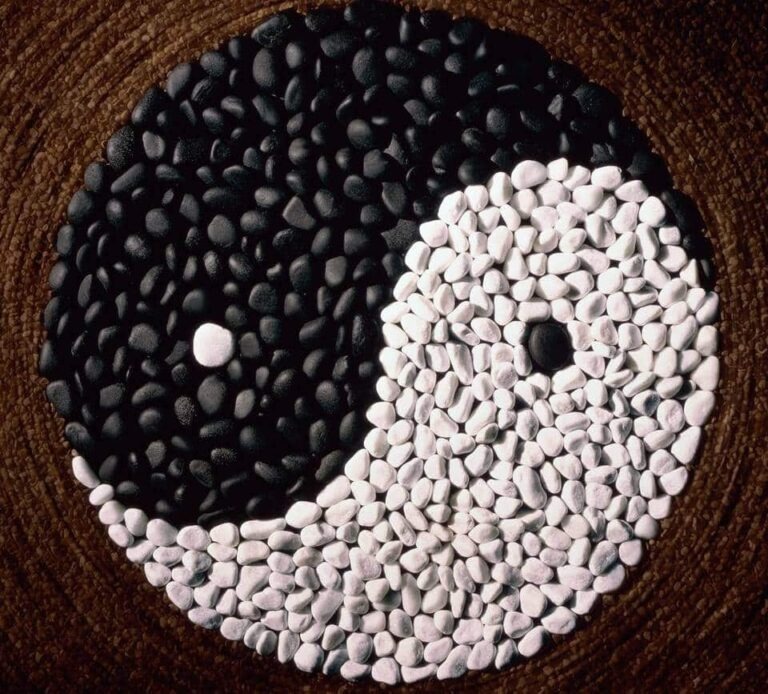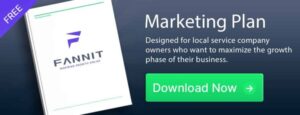The rise of the internet and inbound marketing has since created a heated debate in the world of marketing, outbound vs inbound marketing — which is better?
I’m sure that you’re familiar with the Taoist symbol of yin and yang. That’s right, we’re starting off with ancient Chinese philosophy — that’s how you know it’s going to be an “Evan” post on the Fannit blog.
Yin and yang represent the divine principle that seemingly opposing forces may, in fact, be complementary to each other.
In fact, their balance may even be essential for maintaining proper order.
Inbound marketing and outbound are the marketing parallels of these natural forces.

Which Should I Do?
I can’t tell you how many times we’ve been asked…
“Do I need inbound or outbound marketing?”
Okay, actually I can tell you. About 37 times. This year.
You have to love marketers. We all are just looking for the magic bullet that will solve all of our problems with the simple press of an “Install” button.
Good Strategies for Inbound Marketing and Outbound Marketing
The reality is, true marketing success can only be achieved through a well-rounded strategy that encompasses both inbound and outbound marketing.
There really is no ongoing battle between the two forces of marketing; they both complement each other in cultivating a healthy marketing strategy.
Outbound strategies can be instrumental in acquiring new contacts and following up on interested parties, while inbound strategies are helpful in continually delighting that audience until they’re ready to discuss doing business with you.
To help you better understand where both of these strategies fit into your overall goal, I’ll want to talk about some of the different inbound and outbound marketing merits that can get your business moving forward.
Inbound Marketing
I firmly believe that before you can start properly marketing to any audience, you must have something of value that you can share with them.
This “something” must be anything that you’ve estimated will be valuable to your audience. In an inbound marketing strategy, this goes by many names.
- Content offer
- Lead magnet
- Downloadable
Inbound marketing as a methodology only works as well as the content that you have to support it.
If you’ve taken the time to research your audience, then you should have a good hunch of what would be valuable to them.
Here are some examples to get your content marketing going through inspiration:
- Providing real estate services? Give them a free buyer’s (or seller’s) guide
- Selling professional IT services? Let them see an infographic on the money your services can save them
- Own an ice cream company? Let them download a coupon for a free cone

In fact, as a leading SEO expert agency, one of our most popular downloadable items is our SEO cheat sheet for perfectly optimized pages. I highly recommend checking it out.
The golden rule of inbound marketing strategy is that you have to have something of value that your audience is willing to trade their information for.
Moving to Outbound
In my estimation, marketing outbound and inbound are the only one-two punch of marketing that has a consistent track record of success.
Inbound strategy always should come before your outbound strategy. This is contrary to the “old-fashioned” way marketing and sales worked, where it was merely a matter of calling and pestering enough people to purchase your product or service.
The reason being is that before you begin your outbound lead generation efforts, you have to have something that you can give the audience member.
Something other than just a free consultation.
Prospects (see how we define prospecting here) that you’re engaging with will have a much more meaningful experience with your brand if you’ve got something truly valuable that you can give them upfront.
So when talking about inbound and outbound marketing, it’s truly a matter of having your inbound system sorted out ahead of time, prior to storming the outbound field.
Coming Full Circle
Of course, there’s far more to having a properly configured inbound marketing strategy than just having a lead magnet.
In a perfect world, it involves having some (or all) of the following assets configured.
- Short-term and long-term email workflows to nurture prospects over time
- Multiple offers for different personas that you’re likely to do business with
- Clear indicators of when you should reach out
On that last bullet, one of the biggest pieces that play a factor in each type of marketing strategy is the act of reaching out to the prospect who has expressed interest.
Seizing the Opportunity
Much like real life, it’s rare that opportunities just plop into your lap.
However, they do traipse through your front lawn almost every single day if you just open your eyes up to notice them.
This is one of the biggest issues that we run into as an inbound marketing agency.
It’s common to have inbound leads with no dedicated outbound sales developer to be following upon them.
Most prospects who engage with your brand will still need to have somebody follow up and see if they can help out. This is where inbound vs outbound sales really shine.
Having that dedicated team member to quickly follow up on your leads will be a driving force in increasing your sales.
If you are ready to take it on, you may want to look at our B2B Sales and Marketing Playbook
Inbound vs Outbound Marketing Definition
Now that we’ve reviewed the difference between the two, let’s dive a bit deeper into the the definitions of inbound and outbound marketing.
What Is Inbound Marketing?
Inbound marketing is a marketing strategy designed for today’s consumer. On average, the modern buyer conducts 70% of research on their own before reaching out to the company of that service or product.
Inbound marketing is designed to attract prospects who are actively looking for products and services in the market. It is about getting your business found by people who are currently looking for products and services you offer.
Inbound marketing tactics include:
- Blogging
- Content Creation
- Social Media
- Email Marketing
- Lead Magnets
- Search Engine Optimization
Advantages and Disadvantages of Inbound Marketing
One major reason why today’s marketers prefer inbound marketing is that they can focus on giving value to potential customers. The message is mostly educational and non-promotional.
Pros
- Cost-effective
- Less intrusive.
- Highly targeted.
Cons
- Needs large-scale tracking.
- Increasingly competitive since a majority of marketers are already using inbound marketing tactics.
What Is Outbound Marketing?
Outbound marketing, originally known as “traditional marketing”, is often referred to as “interruption” or “push marketing”.
It is a marketing strategy that’s interruptive and tries to “push” a message to as many people as possible without considering if those people are interested or not.
Outbound marketing tactics include:
- Direct mail
- Cold-calling
- Billboards
- Print ads
- Pay-Per-Click (PPC) Ads
- Commercials
Advantages and Disadvantages of Outbound Marketing
The best thing about outbound marketing is you can get your message in front of a huge number of potential customers quickly and, at the same time, build brand awareness.
Pros
- Advertising is identifiable or labeled as such.
- Chain reactions are rare since negative reviews can’t be seen by other customers.
- Direct circular mails make delivering regional advertising so easy.
Cons
- It is hard to measure your ROI.
- You can’t get feedback directly from your leads.
- Spam filters and Adblockers make it hard to reach customers.
- Often costly.
How Are Outbound and Inbound Marketing Similar?
Let’s take a look at some of the similarities of inbound vs. outbound marketing.
They Both Need Resources
Both outbound and inbound marketing strategies need resources, which can be:
- time
- knowledge
- effort
- budget
Outbound marketing requires hiring traditional or digital media planners. Moreover, it needs a deep understanding of how advertisements are priced.
For inbound marketing, content creation requires hiring writers, social media specialists, graphic designers, and other positions in the creative fields.
They Are Both Sustainable
Both outbound and inbound marketing strategies can be sustainable. But to sustain any level of success, both these marketing strategies need continuous effort on your part.
With that said, successful marketers can give proof to the fact that combining outbound and inbound marketing is more sustainable in the long run.
The Strategy Behind Marketing Outbound and Inbound
Above all else, having a true plan is essential to your success. I highly recommend checking out our marketing plan checklist to see which of these core elements you already have in place.
And if you have specific questions about marketing inbound and marketing outbound, please get in touch and I’ll be happy to share everything that we know.
